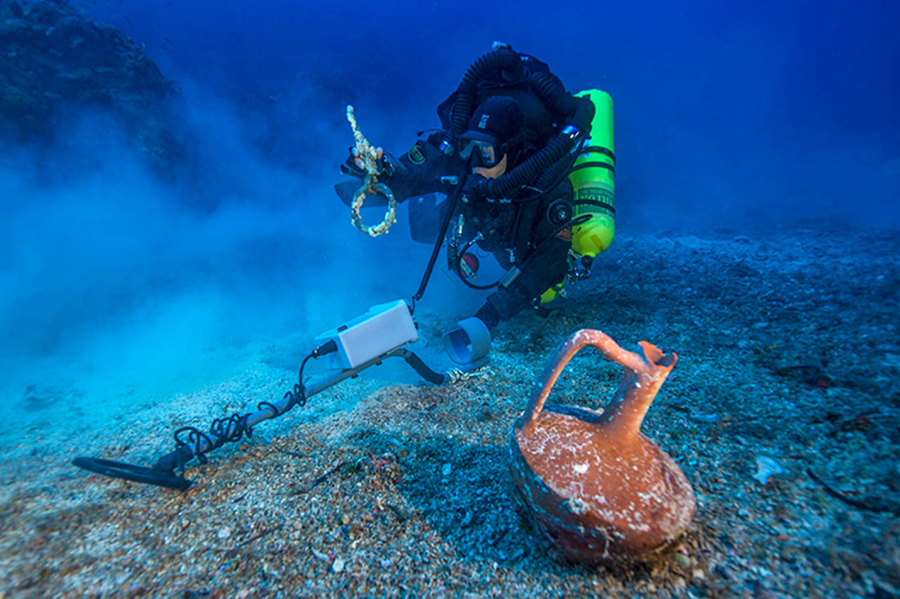Greece – Recently, archaeologists dived once again to the famous ancient Greek Shipwreck that provided the world with the ‘Antikythera Mechanism’, and they returned with their hands full of treasures. More than 50 objects were discovered, and now researchers will be able to understand more about the lifestyle of the ancient Greek.
Many items were rescued, among them: a bronze armrest that belongs probably to a throne, remains of a bone flute, fine glassware, luxury ceramics, a pawn from an ancient board game, and many basic parts from the ship itself.
“This shipwreck is far from exhausted. Every single dive on it delivers fabulous findings, and reveals how the ‘1 percent’ lived in the time of Caesar,” reported project co-Director Dr. Brendan Foley, a marine archaeologist with the Woods Hole Oceanographic Institution (WHOI), as WHOI stated.


In addition, the Antikythera mechanism is an ancient analog computer, which was designed to predict astronomical positions and eclipses by encoding the movements of planets and stars.
Long-term expedition
In 2014, a long-term research program at the ancient Greek Shipwreck began. By the time, it was the first scientific excavation of the wreck, and it delivered the first extensive investigation of all the objects that were unearthed. The researchers are looking for more objects such as the artwork that is still buried in the seafloor. The scientists want to recreate the history of the ship’s “exquisite cargo and its final voyage.” said WHOI.
The first expedition in 2014, consisted on a high-resolution, 3D map of the site, the researchers created using stereo cameras attached to an Autonomous Underwater Vehicle (AUV). The expedition lasted for days, and the divers returned with several findings recovered from the surface sediment. This first expedition proved that even beneath the sand, the ship’s cargo remained conserved.
On the other hand, the 2015 expedition took less time. Four professional archaeologists had to dive for 40 hours. They wanted to study the site and performed controlled excavation to the best equipment, specially made for that. The archeologist were guided with an exquisitely precise multi-dimensional map of 10,500 square meters of seafloor.
“This project is the first-ever systematic excavation of this shipwreck, relying on the precise large-area map created by the robotic survey. Notably, this project marked the first time in the century since the wreck’s discovery that archaeologists were able to join specialist divers in descending to the 55-meter (180 feet) deep site.” WHOI reportedly stated.
In addition, the Antikythera wreck is a shipwreck dating from the second quarter of the 1st century BC. Sponge divers off Point Glyphadia on the Greek Island of Antikythera discovered it back in 1900. Moreover, the sponge divers rescued 36 marble statues of mythological heroes and gods, a bronze statue with the real size of an athlete, several pieces of bronze sculptures, scores of luxury items, and also skeletal remains of people who were on board.
Source: WHOI
